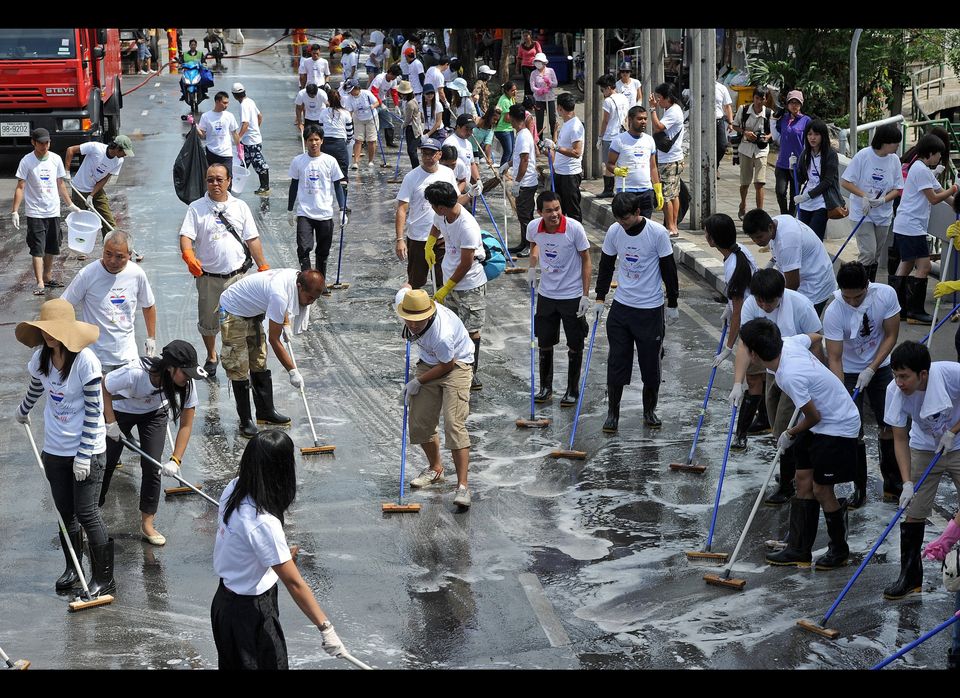The following is a dispatch from Indagare Editorial Director Simone Girner
---
In the weeks leading up to my Southeast Asia trip, I became a flood junkie, reading anything I could get my hands onto regarding the situation in and around the Thai capital. Some reports compared Bangkok to post-Katrina New Orleans, others stated that once monsoon season ended, the city would take exactly 10 days to completely drain. Insiders and locals I spoke to said that the most important part I could play as a traveler was to go on my trip and support the local economy.
I didn't change my plans and returned to Bangkok, a city of fascinating juxtapositions and one of Asia's most vibrant capitals. And I can report that its current state is a composite of everything I had read: The flooding is everywhere and nowhere.
The biggest difference I noticed on my first morning, waking up in a river-view room at the Mandarin Oriental: The Chao Phraya River was silent. Instead of the incessant, traffic jams of small-to-supersized boats making their way up and down and across this Thai lifeline, there were just a couple of hotel shuttles drifting quickly, and often sideways, down the gushing water. Other than the changed river-picture, however, everyday life continues in central Bangkok as always: buzzing, relentless. Many of the sights and temples, like the Grand Palace, Wat Po and Wat Arun are lined by sandbags, but all is dry and open for business.
Locals, including the staff of many of the luxury hotels lining the river, who cannot afford rents in central Bangkok, have, of course been hard-hit. Especially suburbs to the north remain badly flooded and the government is being accused of leaving these poorer neighborhoods intentionally underwater and instead focusing their efforts on keeping central Bangkok dry. On my first day the International Herald Tribune reported a blast set off by residents in the northern Pathum Thani district, reportedly meant to both sound protest and shift sandbags so that water would begin draining.
"Instead of saying Hello, we now say, 'How's your house?'" explained my wonderful tour guide on our walking tour my first day. He spoke to many of the vendors, who come from all over Thailand to sell their goods in the capital. The floods destroyed the orchid plantations of the center, but left the roses and marigold fields intact. The vegetable plantations of the north were also fine, while some of the rice fields, in the central west were badly damaged. Amazingly many locals he spoke with seemed to take everything with incredible poise, even humor. One merchant told of a housing advertisement he had seen, which stated: "Even higher-floor apartments can be conveniently reached -- by boat."
I asked my guide, who is one of the most entertaining and informed specialists I have ever toured with, whether a lot of his clients had canceled their trips in recent weeks. He said no, many just cut the Bangkok portion of their trips shorter. (The only noticeable change to a Bangkok itinerary is the fact that the klongs, the smaller canals, are closed off and river tours via boat are not possible.) Chiang Mai, Chiang Rai and the Golden Triangle are not effected; nor are the islands, like Koh Samui and Phuket.
"It's wonderful to see that tourists remain supportive and continue coming here," he said. "It's so important for the local people."
And the local people remain some of the kindest, most hospitable hosts one can imagine. Whether it's the vendors at one of the sprawling food markets trying to explain their wares in broken English and a lot of pantomime, or the thoughtful staff at the Oriental, at every turn someone is making you feel welcome and interested in learning more about the culture. Hopefully the flooding situation will continue to greatly improve over the coming weeks and travelers will return in healthy numbers. I, for one, am glad to be here and catch--and support--the city at the end of this challenging, momentous time.
Some great finds on this trip: the Indian Market, a maze of color, fabrics and spices in the middle of Bangkok; the solid Golden Buddha at Wat Trimitr, a fascinating story of discovery (it was hidden beneath stucco for decades); and Taling Pling, a low-key Thai restaurant where the locals outnumber the visitors. I also returned to some of my old-time favorites, like Indian restaurant Hazara, the incredible Distill Bar a top of the State Tower and the pool oasis at the Mandarin Oriental, still the best place to recharge from Bangkok's colorful, unique vivacity.
More on my trip will post soon.
Read Indagare's reports on Thailand's best destinations
